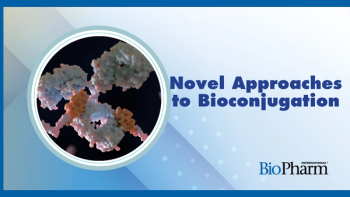
MedImmune Gets Approval to Develop Flu Vaccine Strains Using Reverse Genetics
The US Food and Drug Administration has approved MedImmune's (Gaithersburg, MD, www.medimmune.com) supplemental biologics license application to use reverse genetics technology to create new vaccine strains for their influenza vaccines, including the intranasal FluMist vaccine.
The US Food and Drug Administration has approved MedImmune’s (Gaithersburg, MD,
This technology, also known as “plasmid rescue” technology, will allow the company to have much tighter control over the strains they develop for seasonal flu vaccines, and can increase safety in developing pandemic flu vaccines.
With the classical technology, a scientist takes a live master donor vaccine virus and a live wild type virus (field isolate), and co-infects them into a cell. Because each strain has its own set of eight RNA segments, the result is 256 different genetic compositions that must be screened to find one that displays the desired hemagglutinin (HA) and neuraminidase (NA) antigens as well as desired attenuation and viability. “That’s rather cumbersome,” says George Kemble, PhD, vice president of research and development and general manager for MedImmune Vaccines, Inc. (Mountain View, CA,
With plasmid rescue, the scientists take two genes (those coding for the HA and NA antigens) from the RNA of the wild-type virus, and genes from six RNA segments of the master donor virus. They clone these, making cDNA copies of them, and put them in plasmids. They then insert the eight plasmids into a mammalian cell.
The result, says Kemble, is a vaccine virus that has the exact genetic composition that was desired. “There’s no screening, there’s no selection processes,” he says. “It’s a very designed and very deliberate engineering of the vaccine strains. It makes the process much more reliable.”
The other key advantage of reverse genetics is that it can be used to remove toxic portions of the virus, to increase the safety of the vaccine. This could be particularly valuable for developing a vaccine against a pandemic flu virus.
The hemagglutinin of current avian flu viruses, Kemble explains, has a multi-basic cleavage site-a set of basic amino acids-that appear to make the virus more pathogenic. Reverse genetics would allow developers to genetically remove that virulence determinant from the hemagglutinin molecule.
“So in this case, we have our eight plasmids, but the HA from the H5N1 strain isn’t exactly like the wild type -it’s modified to make it less virulent,” he says. “So when we put our eight plasmids in a cell, we’ll get a virus strain that has the internal genes of our master donor virus and HA from the H5N1 strain that lacks some of those critical virulence determinants of the wild type.” This, says, Kemble, is simply not achievable with the classical technologies. “We think we can produce pandemic vaccine strains much more safely and much more effectively than we could with any pre-existing technology.”
MedImmune is currently collaborating with the National Institutes of Health through a collaborative research and development agreement (CRADA) to create a library of potential pandemic flu strains, as part of a pandemic preparedness effort.
“From my perspective, plasmid rescue is really a breakthrough in influenza vaccine manufacturing,” concludes Kemble. “The increased reliability in producing the strains is critical, and it can enhance quality and safety. These are dramatic improvements from the technologies we have right now.”
–Laura Bush
Newsletter
Stay at the forefront of biopharmaceutical innovation—subscribe to BioPharm International for expert insights on drug development, manufacturing, compliance, and more.




